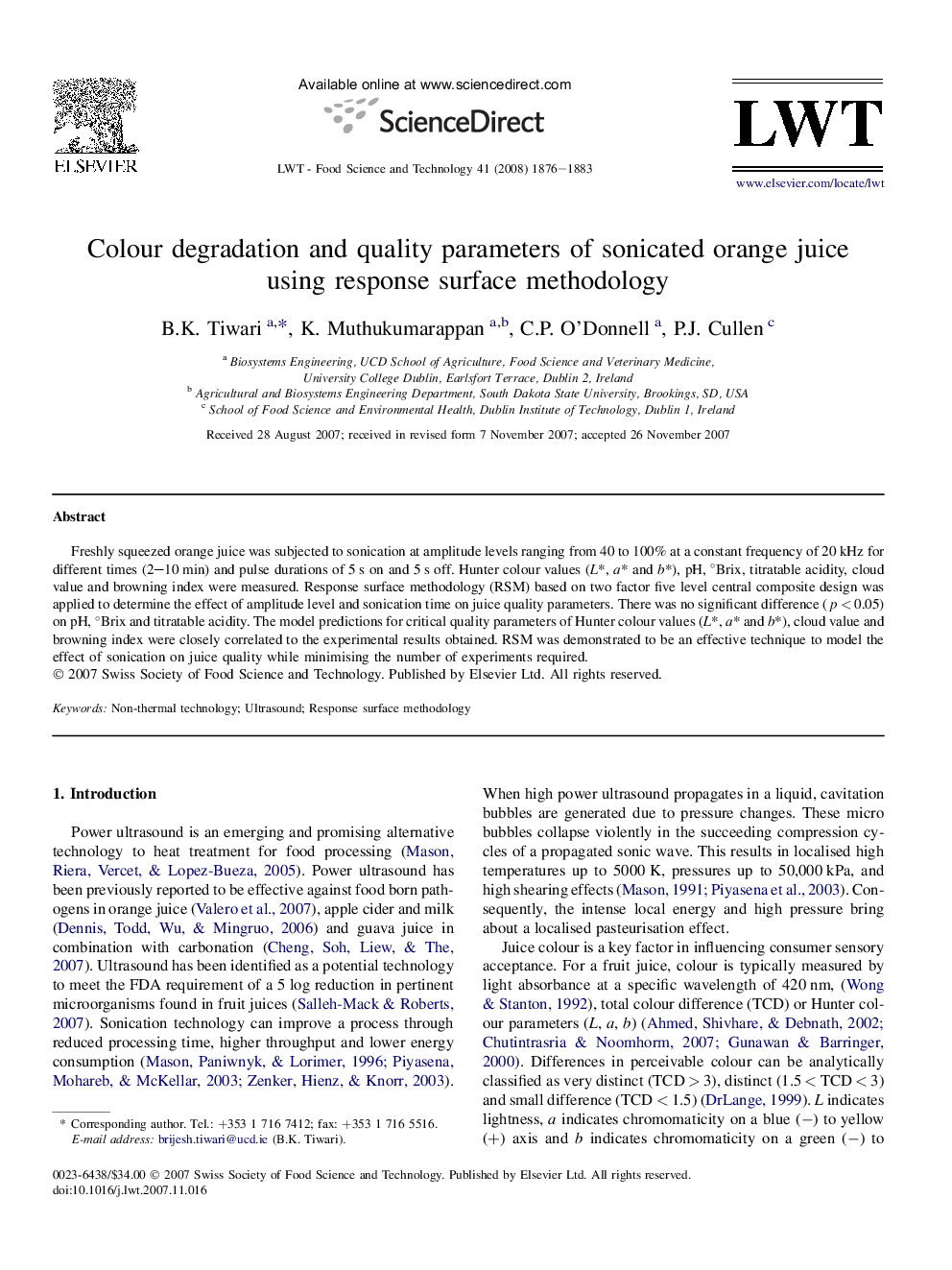| Article ID | Journal | Published Year | Pages | File Type |
|---|---|---|---|---|
| 4565123 | LWT - Food Science and Technology | 2008 | 8 Pages |
Freshly squeezed orange juice was subjected to sonication at amplitude levels ranging from 40 to 100% at a constant frequency of 20 kHz for different times (2–10 min) and pulse durations of 5 s on and 5 s off. Hunter colour values (L∗, a∗ and b∗), pH, °Brix, titratable acidity, cloud value and browning index were measured. Response surface methodology (RSM) based on two factor five level central composite design was applied to determine the effect of amplitude level and sonication time on juice quality parameters. There was no significant difference (p < 0.05) on pH, °Brix and titratable acidity. The model predictions for critical quality parameters of Hunter colour values (L∗, a∗ and b∗), cloud value and browning index were closely correlated to the experimental results obtained. RSM was demonstrated to be an effective technique to model the effect of sonication on juice quality while minimising the number of experiments required.
